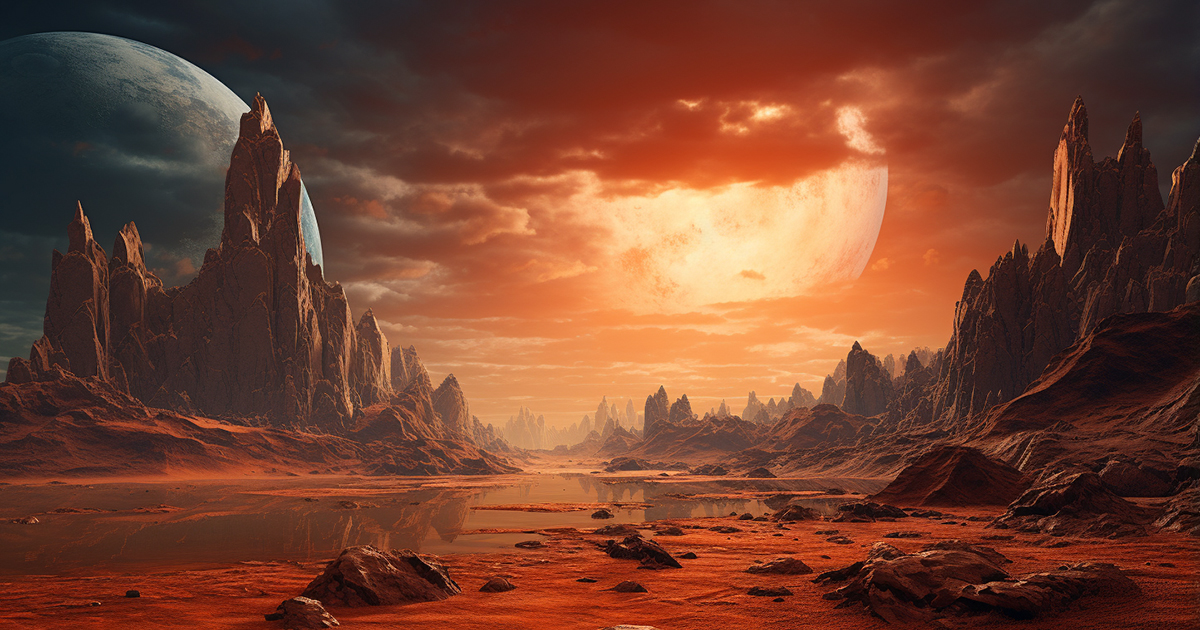In the world of astronomy, there are moments that stand as pivotal turning points, forever altering our understanding of the universe. These moments often occur quietly, hidden in the pages of scientific journals or in the dim glow of a telescope’s lens.
One such moment took place in Geneva, Switzerland, in November 1995 when astronomers from the University of Geneva made a groundbreaking announcement. They had peered into the vastness of space and discovered something that would reshape our cosmic perspective.
Before this revelation, the notion of planets orbiting stars other than our own seemed like a fanciful idea, a topic relegated to the realm of science fiction.
The discovery centered on the distant star known as 51 Pegasi, and it unveiled the existence of an exoplanet, a planet orbiting a star beyond our solar system. This revelation sent shockwaves through the scientific community and sparked a revolution in the field of astronomy.
An exoplanet, in essence, is a celestial body that orbits a star other than our sun. The significance of this discovery lay in the fact that, before 1995, we could only speculate about the existence of such planets.

We believed they might exist, but we had no concrete evidence. Since that pivotal moment, however, the floodgates of discovery have opened, and astronomers have identified thousands of exoplanets within our Milky Way galaxy alone.
One of the key criteria for identifying potentially habitable exoplanets lies in their location within the so-called “Goldilocks Zone.” This zone represents the ideal distance from a star where conditions are just right.
Not too hot, and not too cold – just like the fairy tale character Goldilocks found the perfect bowl of porridge. In the Goldilocks Zone, temperatures are conducive to maintaining liquid water on a planet’s surface, a critical ingredient for the possibility of life as we know it.
The discovery of exoplanets within this habitable zone has fueled our collective imagination. Could some of these distant worlds be home to extraterrestrial life? The answer, according to astronomers, is an enthusiastic “yes.” They point to the presence of liquid water as a promising sign that life could exist on these planets.
Our own Earth resides comfortably within the Goldilocks Zone for our sun, and this fact underscores the importance of finding planets with similar conditions. Telescopes have provided a powerful tool for detecting these celestial neighbors, revealing that many stars in our galaxy have at least one planet in the Goldilocks Zone.
The tantalizing question that has captivated scientists and science enthusiasts alike is whether we will ever find definitive evidence of life on these distant exoplanets. It’s a question that has lingered for decades, but recent developments have brought us closer to an answer than ever before.

In July 2022, a historic event took place in Washington, DC, when President Joe Biden unveiled the first image captured by NASA’s James Webb Space Telescope.
Costing a staggering $10 billion, this cutting-edge instrument boasts the most advanced infrared imaging technology ever created. What sets it apart is its specific mission: to scrutinize planets within the Goldilocks Zone for signs of life.
The James Webb Space Telescope’s ability to analyze exoplanet atmospheres is nothing short of revolutionary. By capturing light from these distant worlds and passing it through a prism, scientists can discern the chemical composition of their atmospheres.
This capability opens up the possibility of detecting chemicals that do not occur naturally—a strong indicator of industrial processes, possibly indicative of intelligent civilizations.
As we continue to catalog an ever-growing number of exoplanets and gather more information from the James Webb Space Telescope, our understanding of potential life beyond our planet expands exponentially.
This remarkable device is a game-changer, offering a new window into the history of our universe and a chance to unravel the mysteries of extraterrestrial existence.
Video:
In conclusion, the journey of exoplanet discovery has evolved from a quiet revelation in a scientific journal to a thrilling quest for signs of life in the cosmos. The Goldilocks Zones of distant stars are no longer just theoretical constructs; they represent our best hope for finding extraterrestrial neighbors. With the James Webb Space Telescope as our guide, we stand on the brink of an exciting era in which the mysteries of the universe may finally be revealed.

19 thoughts on “Exploring the Cosmos: A New Era of Exoplanet Discovery”
Comments are closed.